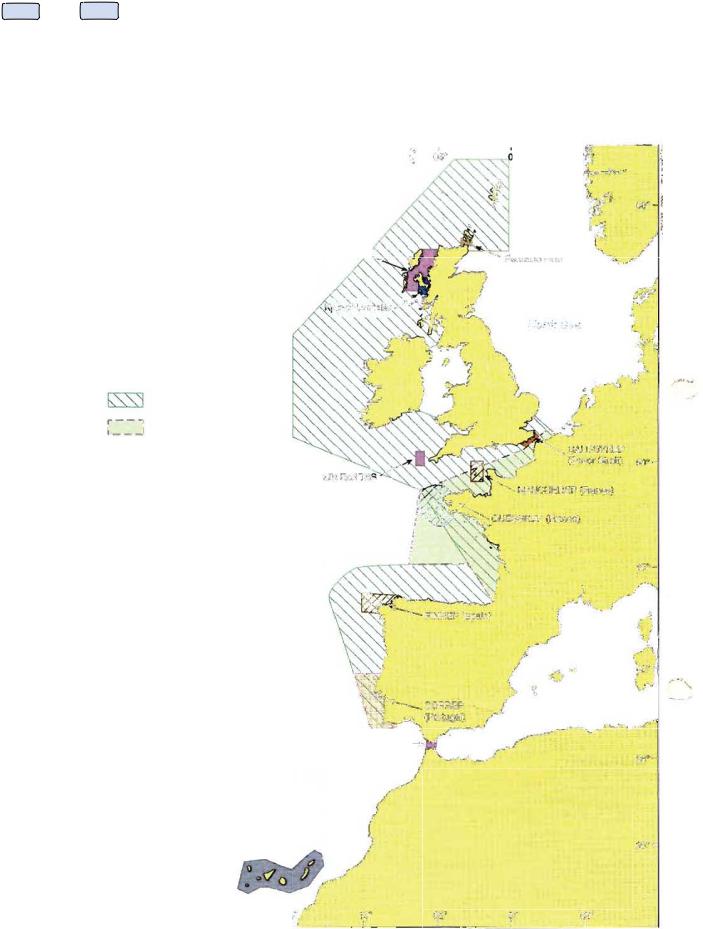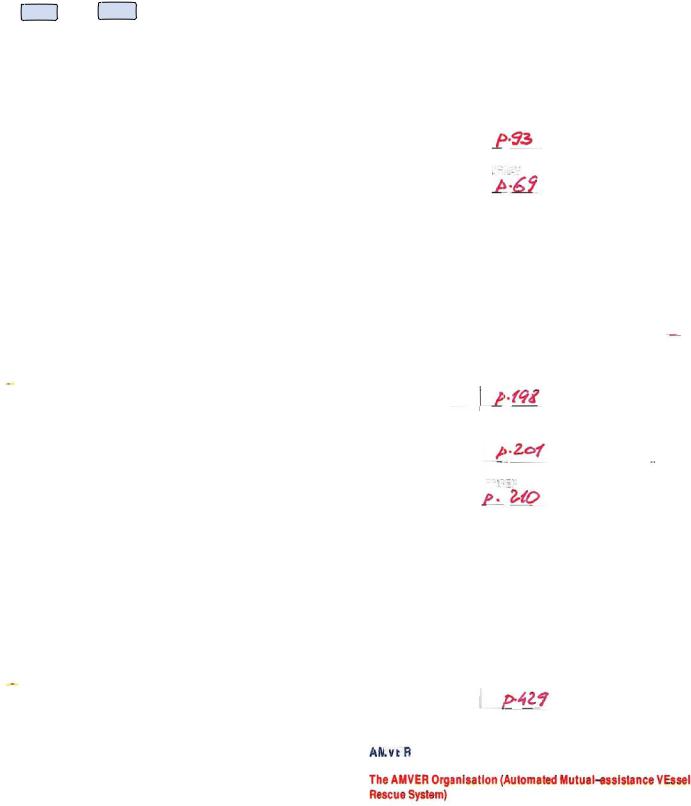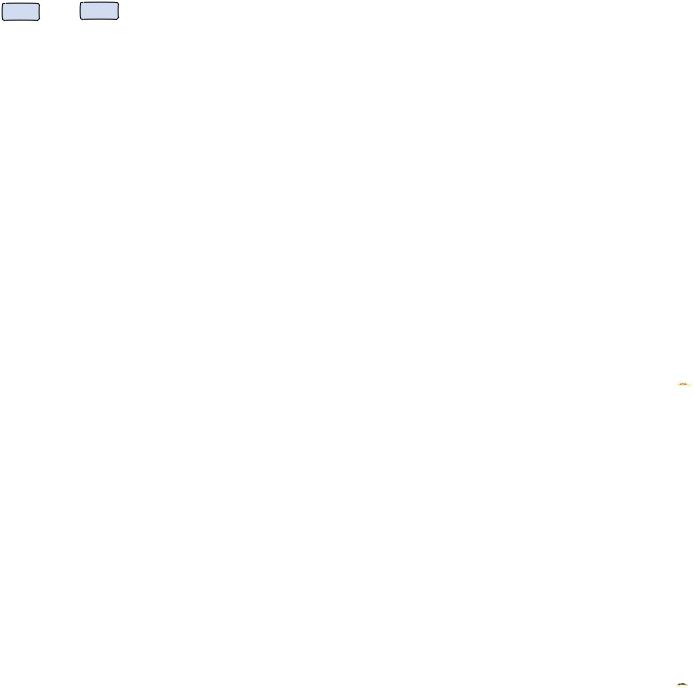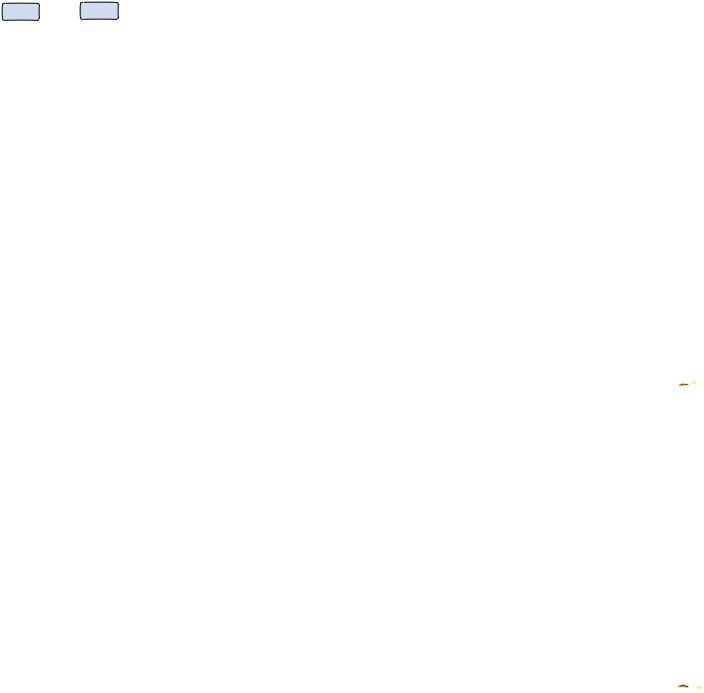
NP 286(1) United Kingdom and Europe
.pdf


Contents Index
SHIP REPORTING SYSTEMS
USCG Operations Systems Center (OSC),lIartlnsburg, WV
Fax: +1304 2642505
DESCRIPTION:
(1)The AMVER system, operated by the United States Coast Guard (USCG), is a maritime mutual assistance organisation which provides important aid to the development and coordination of Search and Rescue (SAR) eHorts in many offshore areas of the world. Merchant vessels of all nations making oflshore voyages are encouraged \0 send movement reports and periodic position reports to the USCG Operations Systems Center in Martinsburg, West Virginia, through selected radio stations or InmarsaL Information Irom these reports is entered into a computer which generates and maintains dead reckoning positions lor vessels while they are within the plotting area. Characteristics 01 vessels which are valuable lor determining SAR capability are also entered into the computer from available sources of information. Appropiiate inlormation concerning the predicted location and SAR characteristics of each vessel known to be within the area 01 interest, is made available upon request \0 recognised SAR agencies of any nation, or person in distress, lor use during an emergency. Predicted locations are only disclosed lor reasons connected with maritime safety.
(2)In case 01 emergencies, all distress messages must be sent to the nearest RCC.
NOT the AMVER Center.
AIIVER PARTICIPATION INSTRUCTIONS:
(1)AMVER is a worldwide voluntary vessel reporting system operated by the USCG to promote safety of life and property at sea. AMVER'smission is to quickly provide Search and Rescue (SAR) authorities,on demand.accurate information on the position and characteristics 01 vessels near a reported distress. Any merchant vessel on a voyage of greater than 24 hours \0 anywhere on the globe is welcome to participate in AMVER. In general, international participation is voluntary regardless 01 owner'S nalionality or vessel'sflag, voyage origin, or ports of call.
(2)According to US Maritime Administration (MARAO) regulations, the following vessels must report and regularly update their voyages and positions \0 the AMVER Center:
(a)United States flag merchant vessels of 1000 GT or more, operating in foreign commerce.
(b)Foreign flag vessels of 1000 GT or more. for which an Interim war Risk Insurance Binder has been issued under the provisions of Title XII. Merchant
Marine Act, 1936.
(3)In accordance with TItle 47, Code of Federal RegulatiOns (CFR), Ch. I, Sec SO.905, United States vessels which transport more than six passengers lor hire, operated
more than 200 n miles from the nearest land must participate in the AMVER system while engaged on any voyage where the vessel is navigated in \he open sea lor more than 24 hours:
(4)Inlormation voluntarily provided by vessels to AMVER is kept strictly confidential, and is protected by the Coast Guard. It will be released only lor salety purposes.
(5)AMVER'sgreatest use is in providing SURface PICtures, or SURPICs, to Rescue Coordination Centres (RCCs). A SURPIC either lists latitudellongitude or provides a
graphical display of vessefs near the position of a distress. It is used by RCCs to coordinate the eHorts 01 merchant vessels and other resources to provide the best and most timely assistance possible to distressed vessels or persons al sea.
WHAT AND WHEN TO REPORT TO AMVER:
(1)The IoIlowing reports should be sent
(a)Saifing Plan, containing complete routeing information, should be sent within a lew hours before, upon, or whhin a few holl'Safter departure.
(b)Position Report should be sent within 24 hours ofdeparture. and subsequently atieast every 48 hours untif arrival. The destilation should also be included in Poshion Reports.
(e)Deviation Report should be sent as soon as any voyage information changes which could aHect AMVER'sability to accurately predict the vessel'sposition. Changes in course or speed due \0 weather, ice, change in destination, or any other deviations more than 25 n miles lrom the original Sailing Plan should be reported as soon as possible.
(d)Arrival Report should be sent upon arrival althe port of destination.
(2)At the discretion of the Master, reports may be sent more frequently than the above
schedule; lor example, in heavy weather or under other adverse conditions.
(3) AMVER also needs inlormation that describes communications equipment,
Inmarsat numbers, radio watch schedule, medical personnel on board, and so forth.
This information is coHected separately, retained In the automatic data processing system, periodically Validated, and used only for search and rescue purposes.
190

Contents Index
SHIP REPORTING SYSTEMS
COMMUNICATION METHODS FOR flUNG AMVER REPORTS:
(1) The following methods are recommended for ships 10 transmit AMVER reports:
(a) Electronic mail (e-mail):
(i) if aship already has all inexpensive means of sending e-mail 10 an internet address, this is a pre·erred method. E-mail may be sent via satellite or via HF rado, depending on the ship'sequipment and arrangements with communiCations oroviders ashore. Ships must be equipped with a personal computer, an interface between the computer and the ship's communications equipment, and the appropriate software,
(ii) The e-mail path on shore to the AMVER Center is essentiaMy lree, but the communications service provider may still charge Irom ship-to-shore
(iii) Messages may be sent to amvermsg@amver.org or amvermsg@amver. com
(b) AMVERISEAS MCompre!;sed Message" (Inmarsat Cvia Telenor):
(i) Ships equipped with an Inmarsat Standard C transceiver with floppy drive and capability to transmit a binary file (ship'sGMDSS Inmarsat-C transceiver can be us~); an IBM-compatible computer (not part of the ship·sGMDSS Systerr,) with hard drive, 286 or better pc, VGA graphics; an interface between them; and the AMVERISEAS software (available free of charge from the US National Oceanic and Atmospheric Administration, NOAA), may send combined AMVERlWeather observation messages free 01 charge via Telenor Land Earth Stations at:
001 Atlantic Ocean Re~ion-Wesl (AOR-W) - Southbury
101 Atlantic Ocean Re;jion-East (AOR-E) - Southbury 201 Pacific Ocean Ration (POR) . Santa Paula
321 Indian Ocean Reg;on (lOR) - Aussaguel
(ii) AMVER address: NOAA phone number entered in the "addressbook" (for further information on tow 10 find the NOAA phone number and to correctly setup the addressbOOk, see the instruction sheet lor your specific brand of Inmarsat C transceiverI.
(iii) AMVERISEAS softwan~can be downloaded from the NOAA SEAS website or requested from:
Telenor Satellite Services, lne.
1101 Wootton Parkway
Rockville, MD 20852 See CONTACT DETAILS.
(c) HF Radlotelex:
(i) AMVER reports may ~ filed via the HF radiotelex service of USCG Stations.
(ii) Further inlormation on how 10 send AMVER messages by this method is provided at the USCG Navigation Center, website: http://www.naveen. uscg.gov/cgcornmfw'call.htm
(d) HF Radio: AMVER reports may also be filed by HF radio at no cost via USCG contractual agreement with the following companies:
(i) Mobile Marine Radio (WLO - ShipCorn Radio Network)
(H) Mobile (WeL)
(iii) Marina Del Ray (KNN) (iv) Seattle (KLB)
(e) Telex: AMVER reports may be filed via telex using either satetite (code 43) or HF radio. Ships must pal'the tariffs for satellite communications. Telex is a preferred method when less costly methods are not available.
(I) Fax:
(i) AMVER reports may bo~ faxed to the USCG Operations Systems Center
(OSC), in Martinsburg, WV.
(ii) In the event other communications media are unavailable or inaccessllle,
AMVER reports may ba faxed directly to the AMVER Computer Center.
However, this is the IE!aS! desirable method of communications, since it ilvoIves manual input 01 information to the computer via eIedIonic processing.
(iii) Do not fax reports to the AMVER Maritime Relations Office in New York, since it is not staffed 24 x7, and relay and processing of reports is delayed pending normal (Mon-Fri) business hours.
(g) CW (Morae Code): Due to the decline in its usage, the number 01 coast stations SUIlPOf"Iing II, its high cost, ,:x>tential for error, and the mandatory carriage of upgraded GMDSS communications capabilities, ships are discouraged from using this medium.
(2) For more information regardng AMVER reporting contact
AMVER Maritime Relations Office USCG Battery Park Building
1 South Street
New York NY 10004-1499
USA.
See also CONTACT DETAILS.
191

Contents Index
SHIP REPORTING SYSTEMS
AMVER MESSAGE LINE DEFINITIONS:
(1) The AMVER line: All AMVER reports must begin with the AMVER line. Report type is one of the following 2·lellercodes:
(a)Sp·Sailing Plan
(b)PR - Position Report
(c)DR·Deviation Report
(d)FR - Arrival (RnaI) Report
Example:
AMVERIrepor1 Iype/I
AMVERlPRII
(2) The A line is required in all reports to identify the vessel submitting the report.
Example:
Alvessel narne/Call sign/I
AlSEA WOlFIKNFGlI
(3) The Bline identities the time associated with the position given in the Cor Glines of the report. All times in B, I, K and L lines should be expressed in UTC as a 6·digit date-time group followed by the letters Z, GMT or UTC. and optionally by a 3-letter abbreviation for the month.
Examples:
emmell
BI230900ZlI
Bl230900Z DECII
BI230900GMTII
Bl230900UTCII
(4) The Cline is used in Position and Deviation Reports to give the vessel'scurrent position (as of the time given in the Bline) in latitude and longitude.
(a) Latitudes are always expressed as a 4-digit group followed by N (North) or S (South). The first 2 digits are interpreted as degrees and the second 2 are interpreted as minutes.
(b)Longitudes are always expressed as a 5·digitgroup followed by E (East) or
W (West). The lirst 3 digits are interpreted as degrees and the second 2 are interpreted as minutes.
(c)It is important to use all digits every time, filling leading digit positions with zeroes as needed, to ensure accurate interpretation of position information.
(d)Position data may appear in the C, G, Iand Llines.
Example:
Cllatltude!longitudell
C/4653N/02820WII
(5) The E line is used to report the vessel'scurrent course (as of the time in the B line) in degrees true as a3-digit number.
Example:
Etcurrent course/I
Et23011
(6) The Fline is used to report the vessel'sestimated average speed over the ground for the remainder of the voyage as a3·digitnumber representing tenths of knots. This is a very important line to report as this speed is used lor AMVER'sdead reckoning computations unless adifferent speed is provided for a specifIC leg of a voyage (see L line). " no speed is given, AMVER will use an assumed speed. It is important to use all digits when specifying aspeed to ensure accurate interpretation.
Example:
F/estimated average speedll
F/l2611
(7) The G line is used to report the port of departure by name and position. It is ifT'4l(ll1antto give the position of the port as the name alone does not always uniquely identily the port.
Example:
Glport of deparlurenatitudelJongitudell
GlLtVERPOOIJ5325N/OO300WII
192

Contents Index
SHIP REPORTING SYSTEMS
(8) The I Une is used to report the vessel'snext port and ETA. As with the G line. it is important to include the port'spcsition as well as its name. The ETA at the next port is also important, especially when a US port is the destination, In all cases, the ETA is compared with AMVER'scomputed ETA as a check on the accuracy and consistency of all voyage route information.
Example:
IIdestinationllatitudellongitude/ETAi'
IINEW YORK USl4042N107401WI051230Z MARiI
(9) The K Une is used to report a vessel'sactual arrival in the immediate vicinity of its destination.
Example:
Klport of arrivaVlatitudellongitudeltine of arrivalll
KlYOKOHAMA JAl3524N!13940ElI52315Z1I
(10)The L line is used to report route information. These lines are the most complex lines in an AMVER report but they are critical to the success of the AMVER system.
Complete route information should be provided in all Saiing Plans and Deviation Reports. As many L lines as needEld may be used to describe the vessel'sintended route. However, detailed route information caused by manoeuvring over short distances near coasts should not be included. tn these cases an approximate route using fewer turn pOints and the "COASTAL'navigation method should be provided. All
L liles except the last one in the report require the navigation method to the next tum point. latitude and longitude of Ihe next tum point. and the ETA at the next tum point. The final L line in a Sailing Plan req Jires only the navigation method from the last tum point to the destination.
(a) |
Navigation Method: The navigation method is required on all L lines. It is the |
|
|
method used to get from the last specified position to the one specified in this L |
|
|
line. There are 3 types 01 na'Iigationmethods recognised by AMVER: |
|
|
(i) |
Rhumb line (RL) |
|
(ii) |
Great Circle (Ge) |
|
(iii) |
Coastal (COASTAL) (The ·COASTAL" method should be used only to |
|
|
indicate when an approximate route near a coast is used in place of the |
|
|
many turn points required to describe the vessel'strue track. However, |
|
|
enough turn points shouldbe provided to keep AMVER'splot of the vessel's |
|
|
position within 25 n miles of the vessel'strue position. The "COASTAL' |
|
|
method should never be used for major portions of a route). |
(b) |
Leg Speed: The leg speed s an optional item on L lines. It is the anticipated |
|
|
average speed over Ihe ground on the leg which ends at the position given in |
|
|
the same L line. Leg speed shOuld be used whenever the anticipated average |
|
|
speed on a leg is signiflcantlf different from the anticipated average speed for |
|
|
the voyage as reported in the Fline. As ageneral rule, a difference of 1knot or |
|
more should be considered sign~icant.
(c) latitude: This is the latitudc~ of the next turn point. It is required in all L lines
|
except the last one in the report. |
(d) |
Longitude: This is the longitude of the next turn point. It is required in all L |
|
lines except the /ast one in the report. The final position in a route is assumed |
|
to be the port of destination. |
(e) |
Port or landmark name: This is an optional item in Llines. It should be used |
only when it will make the route easier to understand. It should not be used in place of a position.
(I) Estimated Time of Amyal (ETA): This is required in any L line where the vessel intends to Jay over att18 position given in the same L line.
Examples:
Unavigation methodlleg/speed/latitudellongitudelport or landmark name/ETA/ETOII
L1RUI2512548N107710W/ABACO/111200ZI/
UGCI3600N/OO600W/161430ZlI
UCOASTAL.I223ONI07800W/QLD BAHAMA CHANNEU241745Z11
UGC/0857N!07934W/PANAMA CANAU211800Zl221300ZlI
URUI (Iinal L line only)
(11 )The M line is optional and is Jsed to provide inlormation on the best way to contact the vessel quickly in the eve"t of a distress at sea.
Examples:
MlWSL.JNMNI/ (Coast Radio Stations monitored)
MltNMARSAT 3234123tOIl (Inmarsat number)
193

Contents Index
SHIP REPORTING SYSTEMS
(12)The V line is an optionatline used to report the medical capability aboard the vessel during the voyage. The codes used are:
(a)NONE (no medically trained person onboard)
(b)NURSE (if a trained nurse is onboard)
(c)PA (if aphysician'sassistant or paramedic is onboard)
(d)MD (if a medical doctor or physician is onboard)
Examples:
Vlmedical personnel aboard this voyagell
VINONElI
VlNURSElI
VIMDINURSElI
(13)The Xline is used for any English language amplifying comments or remarkS the vessel may wish to send AMVER regarding its current voyage, e.g. change of vessel name. flag or owners etc.
Examples:
X/remarksll
XISlOWED DUE TO HEAVY WEATHERII
x/PREVIOUSLV UNIQUE PIONEERNRPD LLOVDS NR 722366311
XlNEXT REPORT AT 171200ZlI
(14)The Y line is used \0 re<pJest relay of the AMVER report to certain other ship reporting systems. currently MAREP. JASREP. AUSREP and CHILREP,
Exaqlfes:
Y/relay instructionsll
V/JASREPII (vessel requesting AMVER to relay the report to JASREP)
V/JASREPIMAREPII (vessel requesting AMVER to relay the report to JASREP and MAREP)
V/AMVERII (vessel reporting to another reporting system such as JASREP has requested relay of the report to AMVER)
Y/AMVERIMAREPII (vessel reporting to another system has requested relay of the report to both AMVER and MAREP)
(15)The Z line must be the last line in every AMVER report. as it is used by the AMVER computer to signal the end of the report.
Exampfe:
Zlend of reporlll
ZlEORII
AMVER VOYAGE REPORT TYPES:
(1)There are four types Of AMVER Reports: Sailing Plan, Position. Deviation and Arrival Reports.
(2)Reportfng Fonnat: Each AMVER message consists of report lines. There are 15 types of lines. The first line in every report begins with the word "AMVER" followed by a slash (I). a two fetter code identifying the report type. and ends with a double slash (II). Each remaining line begins with a specific ieHer followed by a slash (I) to identify
the line type. The remainder of each line contains one or more data fields separated by single slashes (I). Each line ends with a dotmIe slash (II) . All reports should end with an end-of-report line (Z line).
(3)Reporting Data: AMVER participants need to be familiar with the four types of reports. Report identifiers are as fOllOWS:
(a)AMVERISPII denotes Sailing Plan.
(b)AMVER/PRII denotes Position Report.
(c)AMVERlDRII denotes Deviation Report
(d)AMVERlFRII denotes Arrival Report.
(4)Examples of the above reports are as follows:
(a)Sailing Plan: A Sailing Plan should be sent within a few hours before, upon. or within a few hours after departure. II must include enough information to predict the vesseI's actual position within 25 n miles at any lime <tiring the
voyage. assuming the Sailing Plan is followed exactly. Sailing Plans r9QUire
A. B. E. F, G. I. Land Z lines. The M, V. X and Y lines are optional (V line is required for US vessefs).
194

Contents Index
SHIP REPORTING SYSTEMS
Example:
AMVERISPII
AlSEAlAND MARINERlKGJFII
Bl240620Z MARII
E/04511
FI098II
GVTOKVCW3536N113946E1I
IILOS ANGELESI3343N111~;17W/031300Z APRIl
LlRU19013448N113954E1NOJIMASAKII240850ZlI
LlGCI210142OON118000EI280400ZlI
URU200/4200N/16000W13C0030Zl1
LlGC/18813422N112047WI030SOOZAPRlI
LJRLl16111
MlJCSlI
VINONElI
XlNEXT REPORT 250800ZI.'
V/JASREP/MAREPII
ZlEORII
(b) Position Report: A Posit on Report should be sent within 24 hours of departing port and at least once every 48 hours thereafter. The destination should be included, at least in the first few reports, in case AMVER has not received the Sailing Plan information. Position Reports require A, B. C, E, Fand Zlines. The Iline is strongly recommended. The M. Xand Vlines are optional (V line is required for US vessels).
Example:
AMVERlPRlI
AlSEALAND MARINERIKGJFII
Bl281330Zl1
C/4200Nl17544WII
EI09OI1
F120011
IIlOS ANGELESI3343N111817W1031300Z APRIl
MlNMCII
V/MAREPII
ZlEORlI
(c) Deviation Report: Deviation Reports should be sent whenever the vessel deviates significantfy from its Sailing Plan. Other situations in which Deviation Reports should be- sent include, but are not limited to: Change in destination, diverting to evacuate a sick or injured crew member, diverting to avoid heavy weather. any change of route (as, for exampfe. change based on recommendations from a vessel routeing service), stopping to make repairs or await orders, change in anticipated average speed of one knot or more etc. Devialion Reports require the A, B, C, E, F and Z lines. The I Ir1d L lines are required if destinatiOn (11' route changes. The I line is alwayS strongly recommended, even when 1)" required. The M, Xand Vlines are oplional (V line is required for US vessels).
Example:
AMVERlDRlI
AlSEALAND MARINERlKGJFII
Bl291200ZlI
C/4200Nl16654WII
EI090II
F117511
"LOS ANGELESI3343N/120:'4W/040100ZAPRIl
XlREDUCED SPEED DUE TO WEATHERII
VIMAREPII
ZlEORlI
(d) Arrival Report: Arrival Reports should be sent upon arrival in the inmediate vicinity 01 the destination port, such as at the sea buoy or Pilot Station. This report property terminates the voyage in AMVER'scomputer and ensures the vessel will not appear on an AMVER SURPIC until its next voyage. Arrival Reports require the A, Kand Z lines. The Xand Vlines are optional (V line is required for US vessels).
Example:
AMVERlFRlI
NSEALAND MARINERlKGJFII
KILOS ANGELESI3343NI12074W/032200ZlI
VIMAREPII
ZIEORII
195


